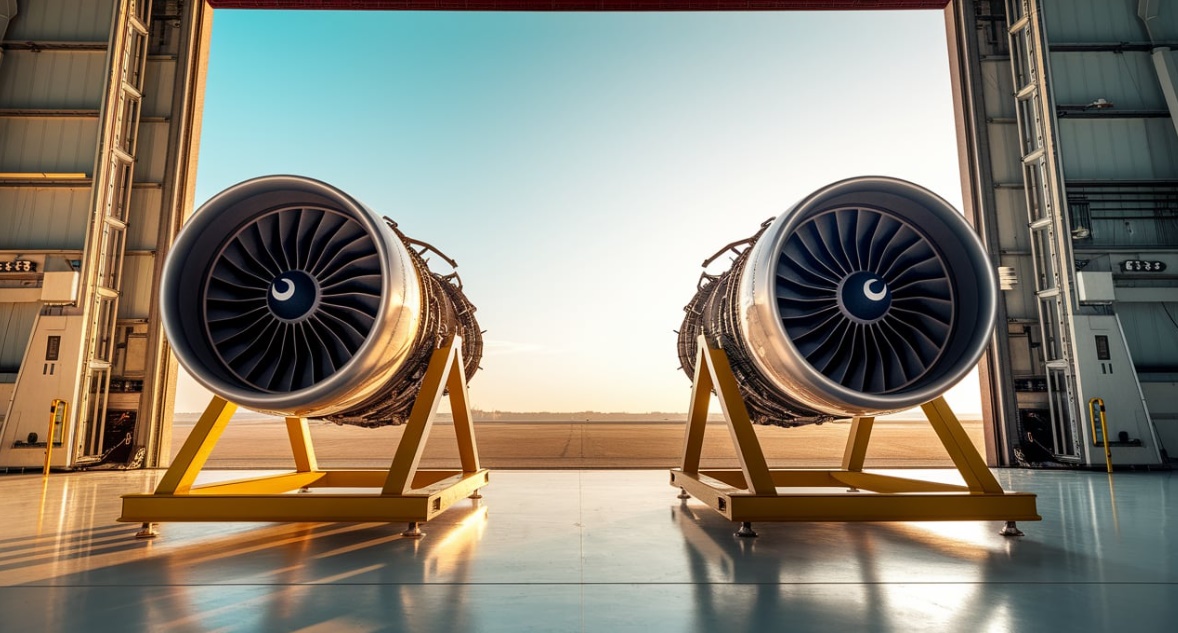When maintenance deadlines loom and specialized equipment needs arise, Aircraft Engine Stands for Rent provide aviation maintenance facilities with immediate access to critical support equipment without massive capital investment. These specialized platforms serve as the foundation for safe engine handling during maintenance procedures, offering stability and accessibility that improves both safety and efficiency. The growing trend of equipment rental in aviation maintenance reflects the industry’s shift toward more flexible operational models that maximize resources while minimizing long-term commitments.
For MRO operations seeking maximum flexibility, airplane engine stand for lease options deliver OEM-certified equipment on demand, eliminating concerns about certification, storage, and depreciation. Specialized equipment providers like https://stands.aero/Airbus-Beluga/ maintain extensive inventories of certified stands that accommodate everything from standard narrowbody engines to specialized applications for unique aircraft configurations.
Understanding the Strategic Advantage of Rental Stands
The decision to rent rather than purchase engine stands represents a strategic approach to resource management that extends beyond simple cost considerations. This approach transforms a potentially major capital expenditure into a predictable operational cost that appears only when the equipment is actually needed.
Financial Flexibility Through Smart Equipment Access
Engine stands, while essential for safe maintenance operations, often represent underutilized assets when purchased outright. For operations with variable workloads or specialized engine requirements, the rental model eliminates several hidden costs:
- Ongoing certification and recertification expenses that continue regardless of usage rates
- Valuable floor space consumed by equipment that may sit idle for months between uses
- Administrative overhead associated with equipment tracking, maintenance, and documentation
- Depreciation and eventual obsolescence as newer engine models require different stand specifications
When Engine Stand Rentals Deliver Maximum Value
Several operational scenarios particularly benefit from the rental approach to engine support equipment. Understanding these situations helps maintenance planners identify opportunities to optimize their resource allocation while maintaining full operational capability.

Ideal Scenarios for Engine Stand Rentals
The flexibility of rental equipment becomes particularly valuable in specific maintenance contexts that demand immediate access without long-term commitment. These situations typically include:
- Unexpected AOG (Aircraft On Ground) situations requiring immediate engine removal
- Seasonal maintenance surges that temporarily exceed in-house equipment capacity
- Special projects involving engine types not typically serviced by the facility
- New contract acquisition periods when testing capacity needs before investment
- Facilities in transition that need temporary solutions during equipment upgrades
Comparing Financial Impacts: Purchase vs. Rental
Understanding the true financial picture requires examining both direct and indirect costs associated with each approach. The following table illustrates the comprehensive financial comparison between purchasing and renting engine stands based on typical industry figures:
| Cost Factor | Purchase | Rental |
|---|---|---|
| Initial Capital Expenditure | $45,000-$100,000 | $0 |
| Monthly Cost | Depreciation only | $2,500-$4,500 |
| Annual Certification Cost | $1,200-$2,800 | Included |
| Storage Requirements | 100-200 sq ft | None |
| Insurance Cost | $800-$1,500/year | Typically included |
| Obsolescence Risk | High | None |
| Maintenance Responsibility | Owner | Provider |
| Transportation Costs | Full responsibility | Often included or arranged |
Quality and Safety Considerations
The quality of engine stands directly impacts both the safety of maintenance operations and the protection of extremely valuable engine assets. Rental providers specialize in maintaining their equipment to the highest standards, often exceeding what individual maintenance operations can achieve with their owned equipment.
Critical Quality Factors in Rental Equipment
Reputable rental providers maintain rigorous quality standards that ensure each piece of equipment meets or exceeds OEM specifications. This focus on quality brings several advantages to maintenance operations:
- All stands undergo regular inspection and certification by qualified technicians
- Components subject to wear are proactively replaced before they create safety issues
- Documentation is always current and immediately available for regulatory requirements
- Stands incorporate the latest safety features and design improvements
- Equipment is professionally cleaned and prepared between each use
The Streamlined Rental Process
Modern engine stand rental has evolved into a highly efficient process designed to minimize administrative burden while maximizing equipment availability. Understanding this process helps maintenance operations integrate rental equipment seamlessly into their workflow planning.
How Today’s Rental Process Works
The typical engine stand rental process now follows a streamlined approach that prioritizes efficiency and customer convenience:
- Initial inquiry specifying engine type, location, and timeframe requirements
- Provider confirms availability and delivers detailed quote within hours
- Digital documentation completion and approval
- Delivery coordination using either customer-preferred or provider logistics
- On-site delivery with all necessary documentation and inspection reports
- Technical support throughout the rental period
- Return scheduling and transportation coordination

Frequently Asked Questions
What documentation is typically provided with rented engine stands?
Rental agreements typically include comprehensive documentation packages containing certification records, maintenance history, inspection reports, and user manuals. These documents satisfy regulatory requirements and provide maintenance teams with all information needed for proper equipment use.
How quickly can rental stands be delivered in emergency situations?
Major providers maintain strategically located inventories that enable delivery within 24 hours to most major aviation hubs for AOG situations. Standard deliveries typically require 3-5 business days, though expedited service is available at additional cost.
Are training and technical support included with stand rentals?
Most reputable providers include basic technical support with all rentals, with premium services offering 24/7 support lines and potential on-site assistance for complex applications. Training is typically provided through digital resources and quick-start guides included with the equipment.
What happens if a stand is damaged during the rental period?
Rental agreements include clear provisions for damage, with most providers distinguishing between normal wear and accidental damage. Basic insurance coverage is often included in the rental rate, with options for additional coverage for high-risk operations.
Strategic Implementation for Maximum Benefit
Integrating engine stand rentals into a comprehensive maintenance resource strategy requires thoughtful planning that aligns equipment availability with scheduled and unscheduled maintenance requirements. This approach delivers financial benefits while ensuring equipment availability exactly when needed.
The optimal approach combines strategic use of rental equipment for specialized or intermittent needs with selective ownership of equipment used consistently. By applying this hybrid model, maintenance operations achieve the ideal balance between cost control and operational capability, ensuring they have the right tools available at the right time while minimizing unnecessary expenses.

